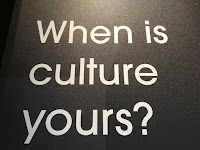FOOD AND HISTORY

Thursday, 30 August, I followed a session of the Summer School "History of the Book" at the University of Amsterdam. I have chosen the topic "De Indische Keuken: Ontwikkeling van de Indonesische Keuken" (Indies Kitchen: Development of the Indonesian Kitchen) guided by Marleen Willebrands. There were about 20 participants, mostly experts in the kitchen area, culinaire history and publishers of cooking books. There was also a cooking celebrity, a famous cook from the television channel 24Kitchen. There is a lady who will start a research about rice. There is a graduate from a master's study called 'Food History and Culture" in Brussels. The more I learned about the other participants, the more I was fascinated how serious is relationship between food and history. It is also important to mention that most of them have direct and indirect relations with the Dutch Indies. We analysed recipes about Indonesian dishes based on cooking books writte...



